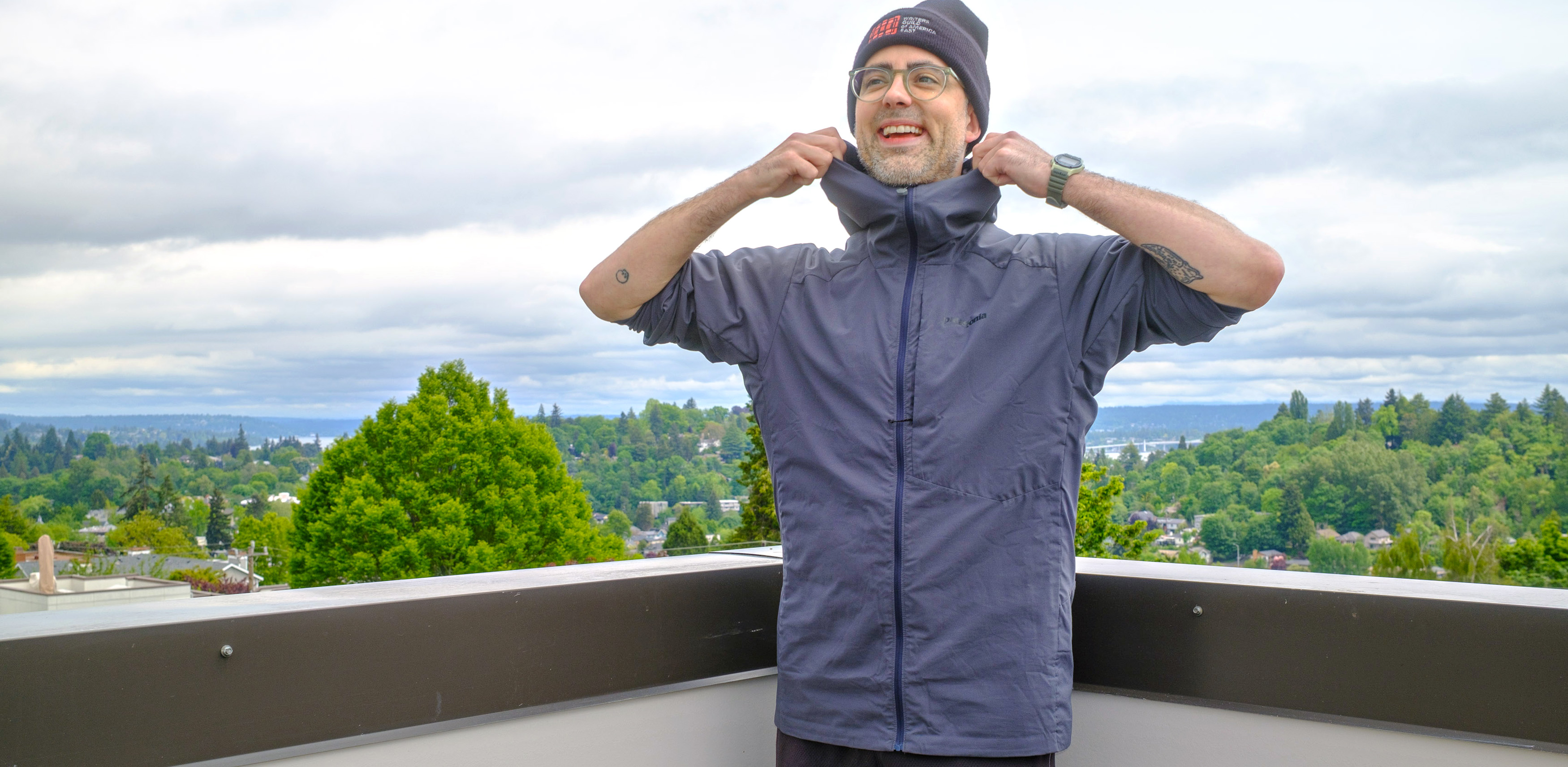Tom's Guide Verdict
You definitely don't need the new Patagonia Nano-Air Ultralight, but if you have $250 to spend and want the crème de la crème in ultra-comfy lightweight jackets, then look no further. Though it's designed for rock climbers, with easy roll-up sleeves and an abrasion- and water-resistant exterior that's extra stretchy and just the right balance of breathable and insulating, you don't need to be an extreme athlete to appreciate the Nano-Air Ultralight. In fact, it's my new favorite jacket for spring-time walks, hikes, air travel and such much more.
Pros
- +
Lightweight, stretchy and breathable with impressive insulating power
- +
Outrageously soft and comfortable
- +
Hood can be worn over a helmet or large headphones
- +
Easy roll-up sleeves
- +
Slim fit for a flattering, non-boxy look
- +
Easy to wash and water resistant
Cons
- -
Pricey at $249
- -
Only one zippered pocket
- -
No ability to tighten/loosen hem; no elastic on sleeves
Why you can trust Tom's Guide
Patagonia's new Nano-Air Ultralight Full-Zip Hoody is easily the most comfortable jacket I've worn in my 37 years (and change) on this planet. Despite weighing a little more than a baseball, this stretchy garment is remarkably insulating yet breathable, keeping yours truly toasty and happy all spring 2025 long.
Designed for everyone from rock climbers to casual hikers, the Nano-Air Ultright features an abrasion-resistant exterior with a stretchy hood that can easily be worn over a helmet, sleeves made to be rolled up and extra venting under the arms to keep you cool no matter your output.
I wore the Patagonia Nano-Air Ultralight Full-Zip Hoody for two months, while hiking in the rain and the sunshine, during chilly early-morning dog walks, cross-continent flights, hilly bike rides and even casual outings with friends. In all of these scenarios, the Nano-Air Ultralight left me thoroughly satisfied. But is it worth $249? Read on.
Patagonia Nano-Air Ultralight: Price, sizes and colors
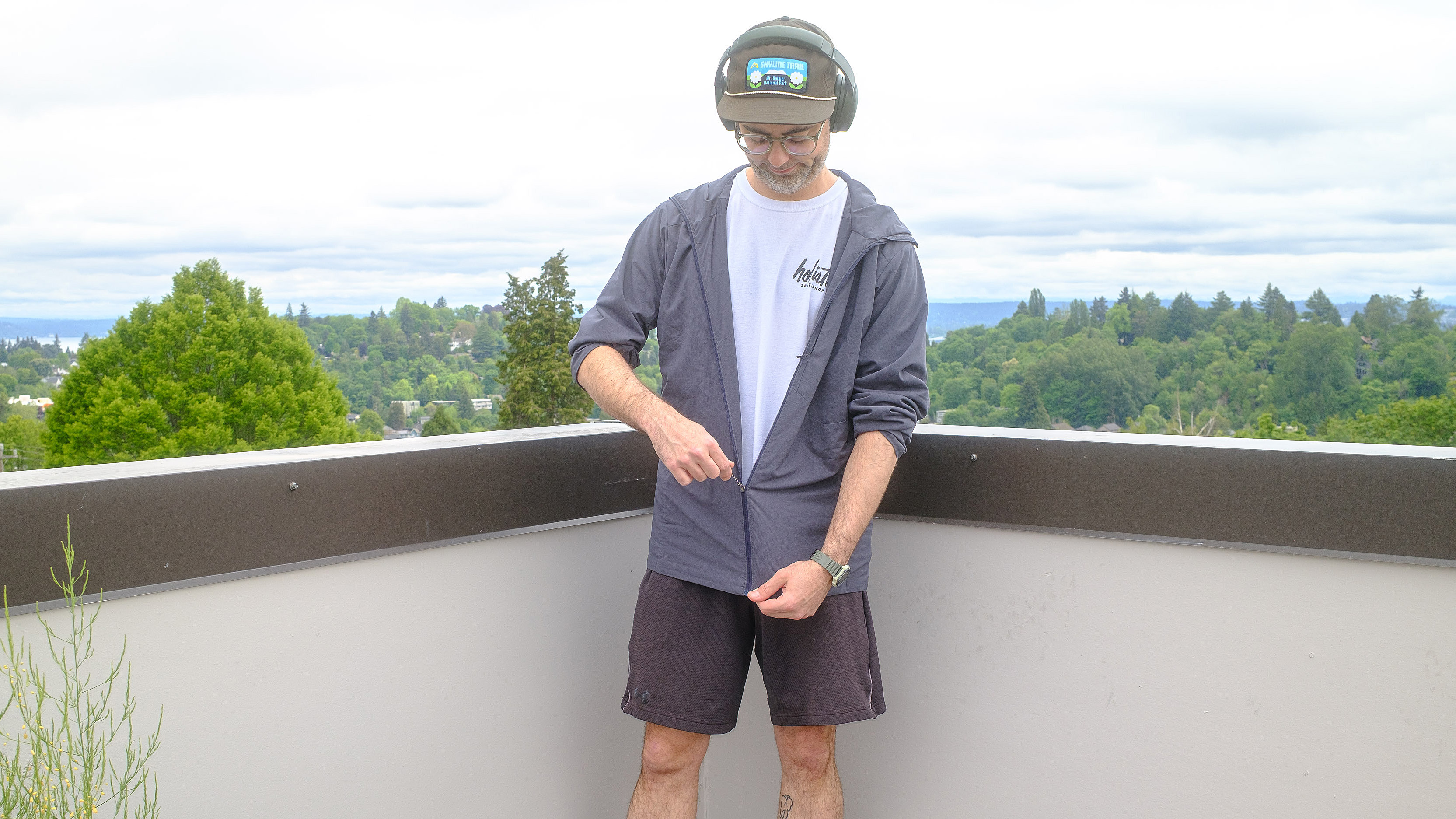
The Patagonia Nano-Air Ultralight Full-Zip Hoody is available now in men's and women's sizes for $249. Women's sizes range from XXS to XXL, and men's sizes range from XS to 3XL.
Women can choose from Smoulder Blue (the same color I tested here) and Abundant Blue, which has a sort of royal meets baby blue vibe.
Men can choose from Smoulder Blue (again, shown here), a lovely aquamarine Wetland Blue (which I seriously dig) and bold Pollinator Orange.
The Nano-Air Ultralight also comes in a pullover variety in both men's and women's sizes with a half-zip instead of a full-zip and no hood for $199.
Get instant access to breaking news, the hottest reviews, great deals and helpful tips.
Patagonia Nano-Air Ultralight: Design and features
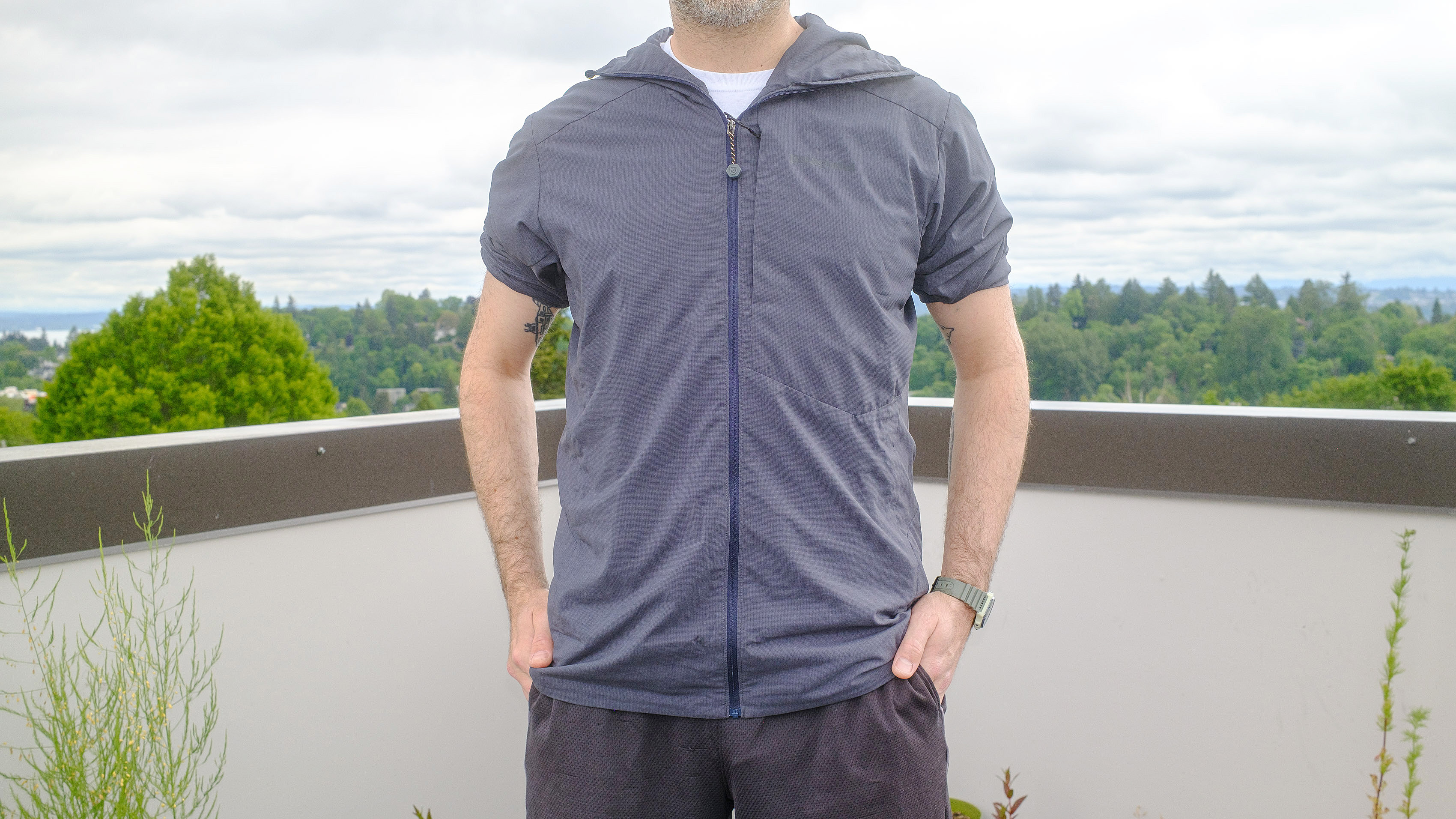
The Patagonia Nano-Air Ultralight Full-Zip Hoody was designed with hardcore rock climbers in mind, but is also perfect for hikers, joggers, bikers, walkers, runners and just about anyone who enjoys exercising outdoors during the mild months.
The entire shell and lining are made from super-stretchy and abrasion-resistant rip-stop polyester. The shoulders, upper arms, back and hood are all designed to provide insulating power, while the underarms use a different double-knit polyester material with excellent breathability and sweat-wicking capability.

Depending on the season, the Patagonia Nano-Air Ultralight Full-Zip Hoody might be a solid choice as your main jacket; I found it kept me warm in temperatures down to the mid-forty degrees Fahrenheit with nothing but a t-shirt under. It also works brilliantly for layering. More on that in the Comfort and Durability section below.
The ripstop exterior also proved durable during my two months of testing and one wash cycle, with almost no signs of wear or tear.

Purposefully simple and utilitarian in its design, the jacket has no elastic at the hem or cuffs to adjust tightness. There's also only one pocket, a zippered affair on the exterior chest of the jacket.
I found this 'slim-fit' garment anything but restrictive. While some Patagonia jackets are boxy, that's not the case with the Nano-Air Ultralight Full-Zip; I'd even call the cut flattering.
A men's size large was almost a perfect fit for my five-foot, eleven-inch frame. The jacket is a tad long, but that's to provide extra coverage for when your arms are fully extended, reaching for that next overhead boulder.
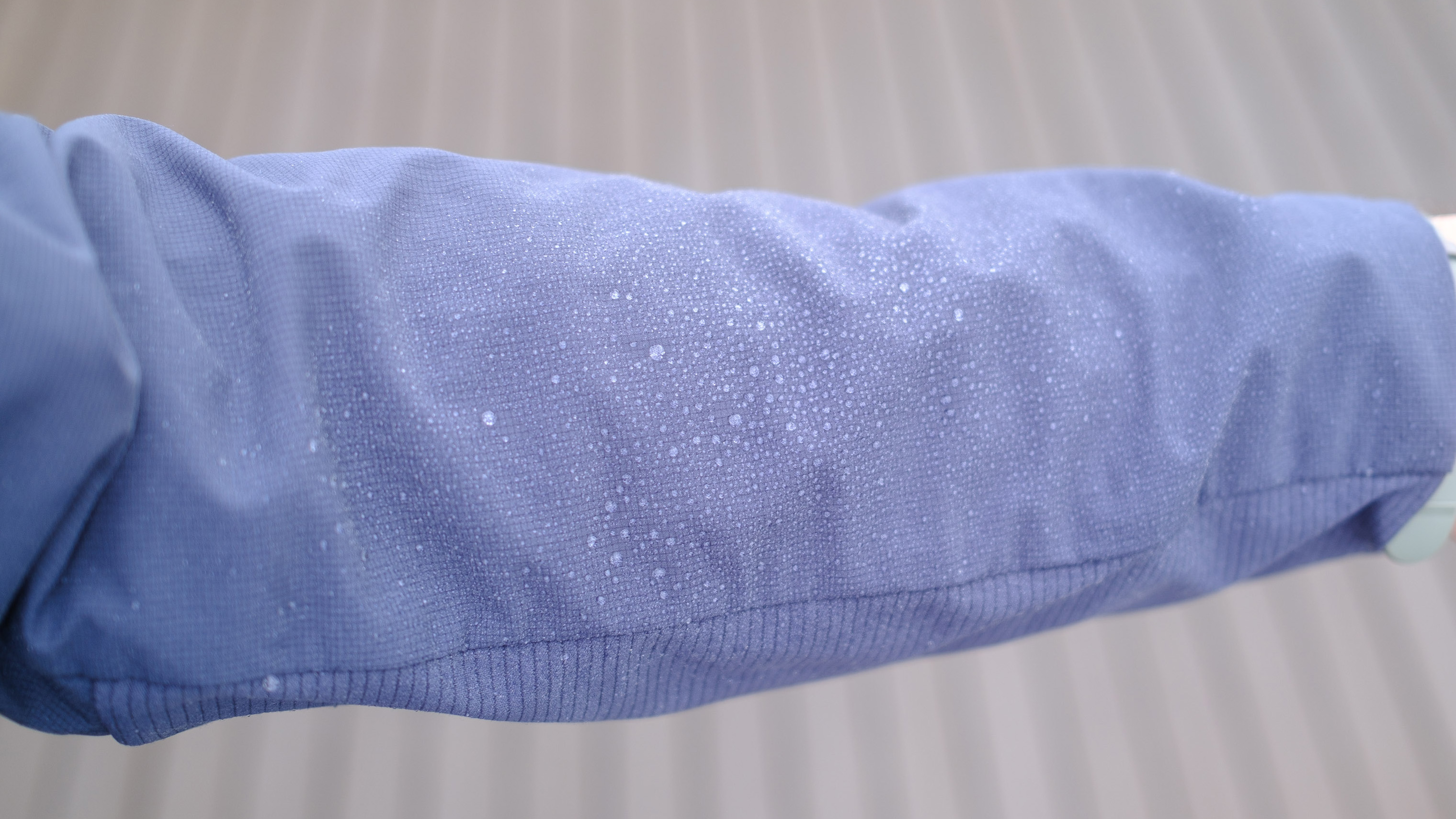
The Nano-Air Ultralight comes treated with a Durable Water Repellent Coating (DWR), but for maximum resistance to the west stuff, you'll want to waterproof the jacket like the pros every six months or so (it's easier than it sounds).
The above image was taken after I recently washed and rewaterproofed the Nano-Air with Nixwax TX. Direct, my go-to. As you can see, water beads up rather than penetrating the fabric.
I was also impressed by how well the Nano-Air Ultralight survived its first wash cycle, stepping out good as new, with zero pilling and no mishapeness.
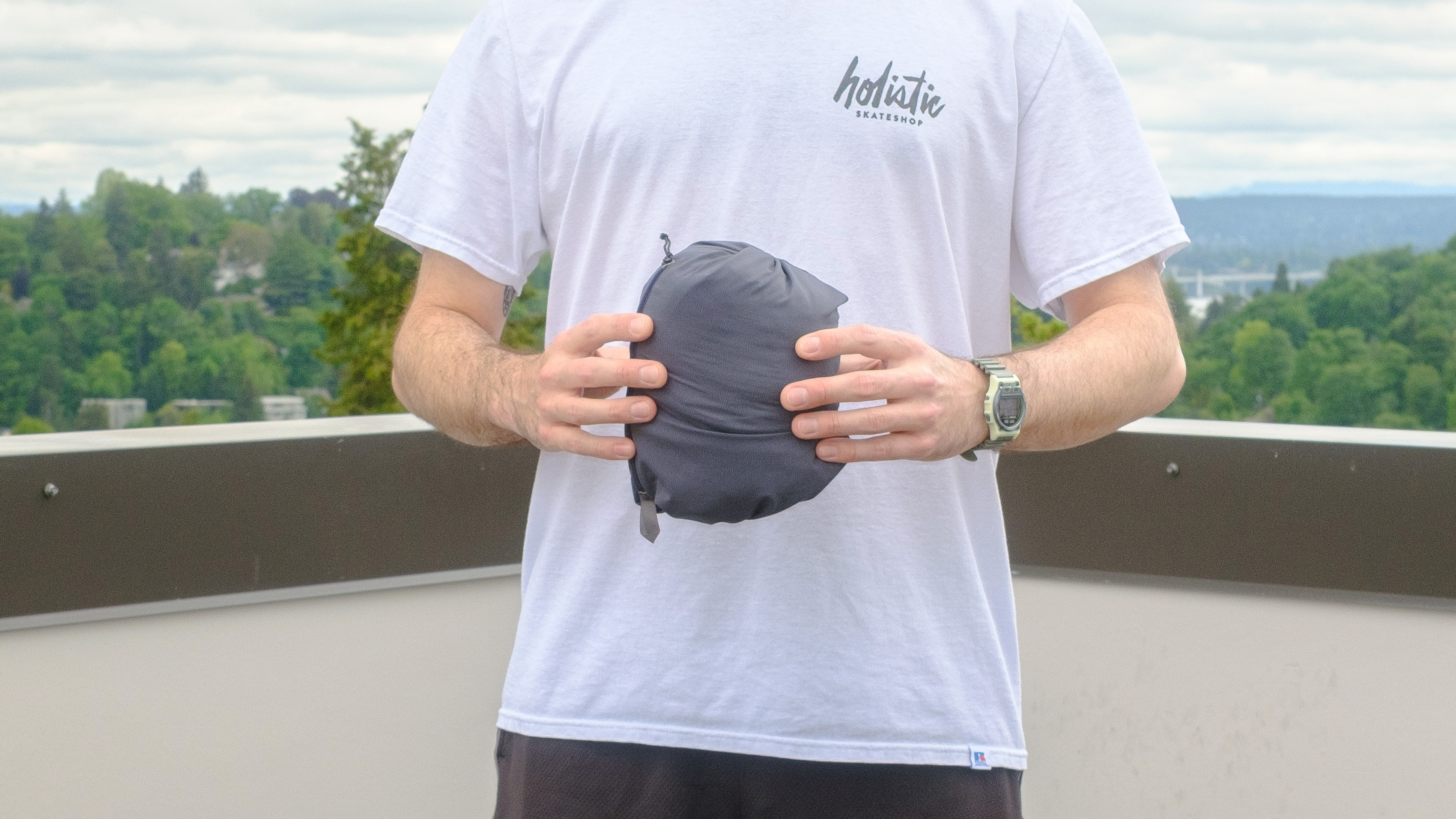
The single chest pocket on the Patagonia Nano-Air Ultralight is easily my biggest complaint. However, said pocket does double as a compression stuff sack for the jacket. Once safely packed down, the whole thing is no bigger than a grapefruit, or roughly 16 inches in circumference.
Again, with a weight of roughly half a pound, this jacket is a no-brainer for cramming in a pocket or backpack before going on hikes, picnics, trips, etc., even if the chance of wearing it is ultra-slim (see what I did there?).
Buddy ain't gonna weight you down and definitely won't cramp your style.
Patagonia Nano-Air Ultralight: Comfort and durability
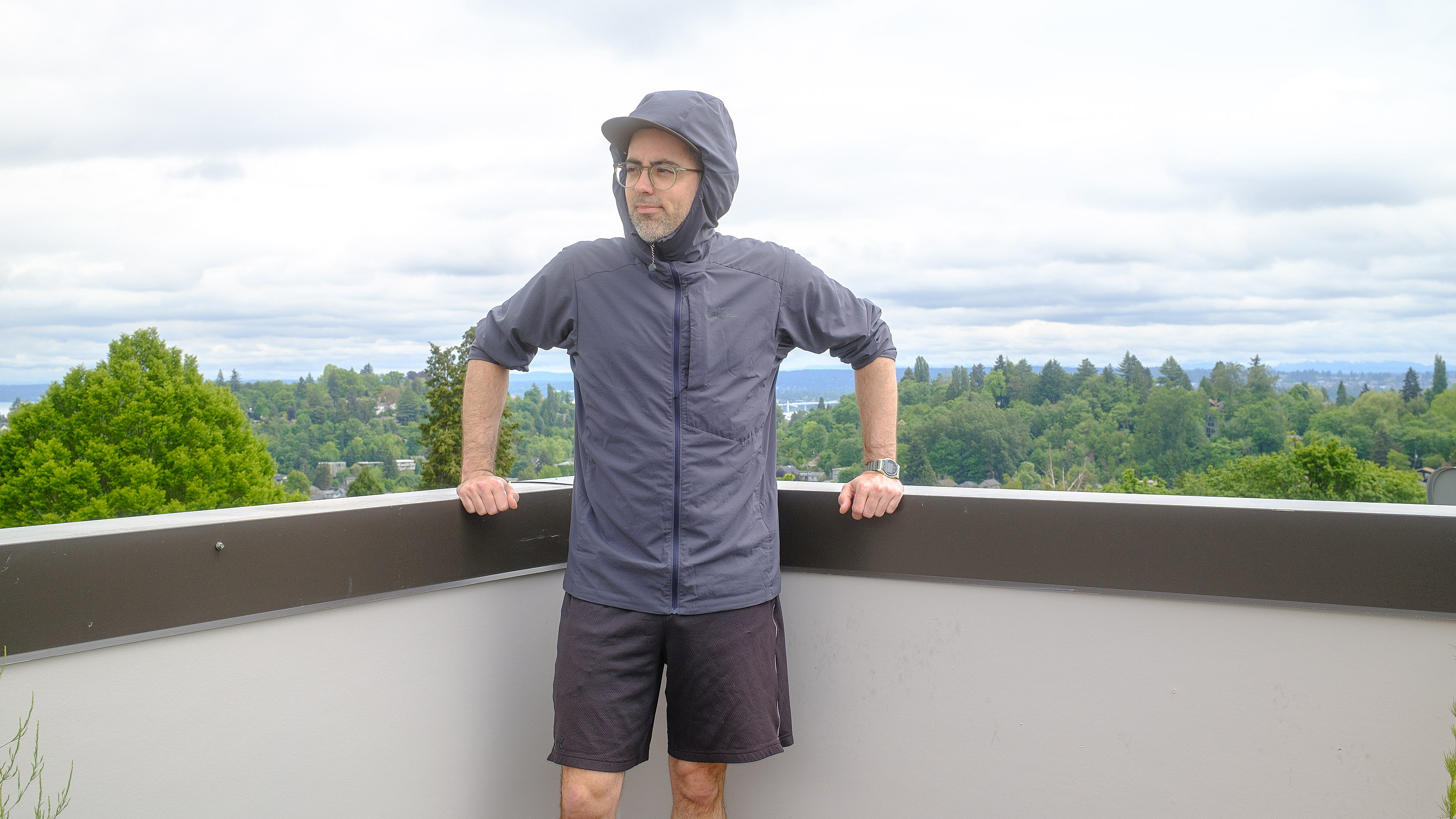
With sleeves designed to easily roll up and a hood built to stretch over helmets and other bulky headgear, the Nano-Air is perfect for heart-pumping, active folk. I was delighted to find that it's one of the only jackets I've encountered where I can comfortably wear the hood over a pair of bulky Bose QuietComfort headphones and my favorite ball cap.
At roughly 8.8 ounces, the Nano-Air Ultralight lives up to its name; the jacket feels like you're barely wearing anything at all, yet the insulating power is no joke.
You can easily rock this as your main when the temps are anywhere from the high 40s to the mid 60s.
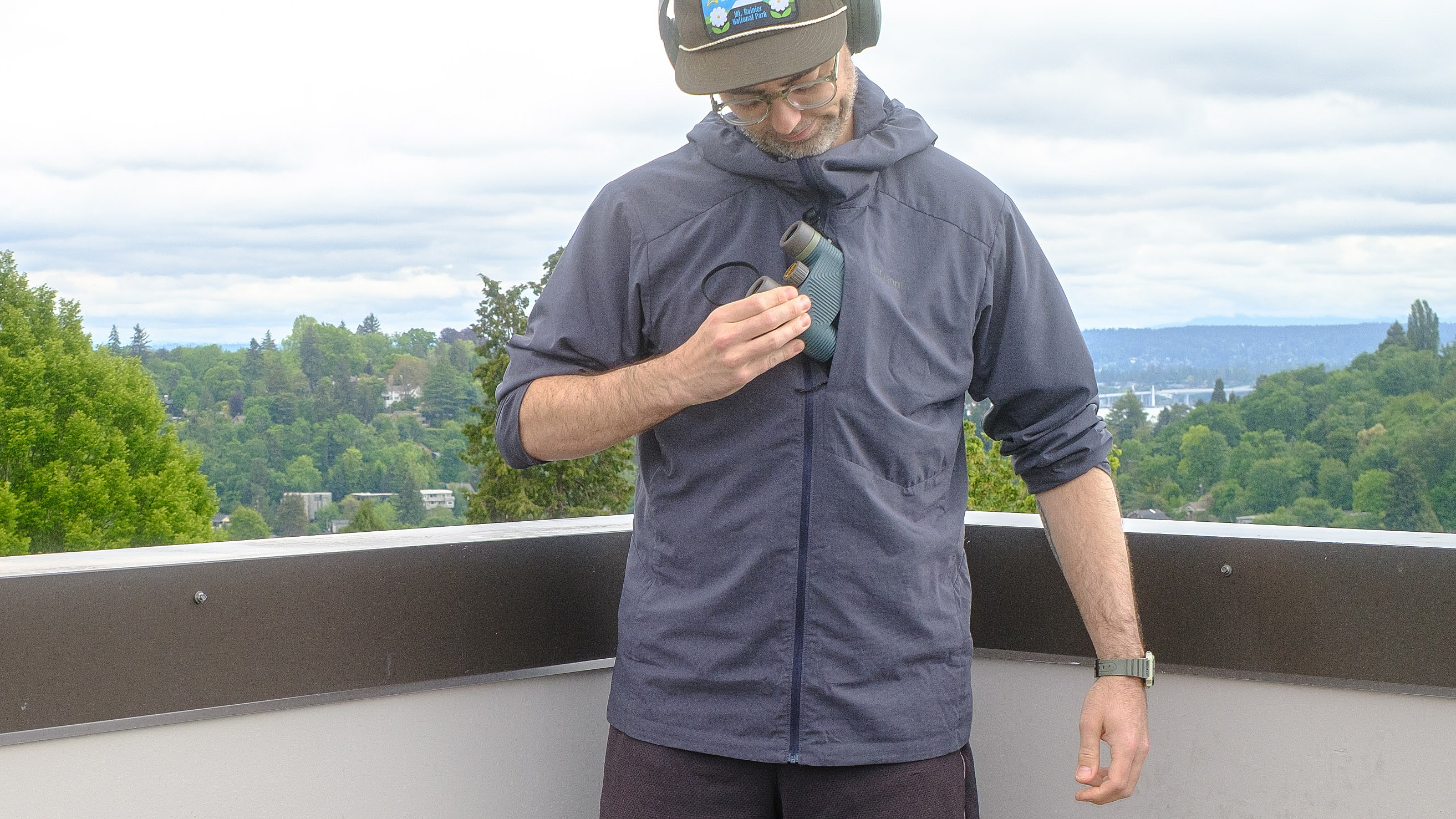
I wore the Patagonia Nano-Air Ultralight in a wide range of situations, all with positive results. It's worth calling out that after wearing it for four flights in two weeks, this is my new favorite jacket for air travel. My go-to used to be the $289 Patagonia Nano Puff Hoody, but the Nano-Air is just so much more comfortable and lightweight.
I also wore it for a stretch of wet spring weather here in Seattle, Washington, mostly during early morning walks with the pups and mid-afternoon urban hikes. In all but hard rain, it keeps you dry.
Finally, the Patagonia Nano-Air Ultralight was my main outer layer during a gorgeous hike in the Columbia River Gorge up Dog Mountain and also my insulating layer under a high-end Arc'teryx rain jacket during chilly torrential downpours in upstate New York. Both of these use cases proved successful: worn as an outer or insulator, it helped maintain my core temp, didn't weigh me down, and kept me dry.
The Nano-Air Ultralight hood even fits over my comically mushroom-headed Abus Gamechanger 2.0 bike helmet.
Patagonia Nano-Air Ultralight: Compared to its peers
| Header Cell - Column 0 | Patagonia Nano-Air Ultralight Hoody | Arc'teryx Atom SL Hoody | Columbia Ascender II Hooded Softshell |
|---|---|---|---|
Price | $249 | $279 | $99 |
Weight | 8.8 ounces | 9.9 ounces | ~20 ounces |
Material | Recycled polyester | Polyester, nylon | Polyester |
Insulation | 20 grams synthetic | 20 grams synthetic | n/a |
Water resistant treatment | Durable Water Repellent (DWR) | Durable Water Repellent (DWR) | Omni-shield |
Pockets | 1 zippered chest pocket | 1 zippered chest, 2 zippered hand pockets | 1 zippered chest, 2 zippered hand pockets |
The Arc'teryx Atom SL Hoody is the closest competitor to the Patagonia Nano-Air Ultralight. I own one, and while it's nearly as comfortable as the Patagonia, it has twice the insulation and is noticeably more present on the body, even though it's only a tad heavier, making it better suited for cooler conditions.
You do get three pockets on the Arc'teryx versus just one on the Patagonia.
The Nano-Air Ulralight is thinner and stretchier than the Atom SL. Both feature special moisture-wicking material under the arm to keep you cool during workouts, but the Nano-Air Ultralight is more breathable overall, whether worn on its own or under a shell.
I haven't tested the Columbia Acender II Hooded Softshell, but on paper, it looks to be a decent wallet-friendly alternative to the Patagonia or Arc'teryx. That said, it's significantly heavier and lacks insulation. Still, it should offer plenty of stretch and breathability, making it a potentially good option for hikes and other outdoor spring activities.
Patagonia Nano-Air Ultralight: Should you buy it?
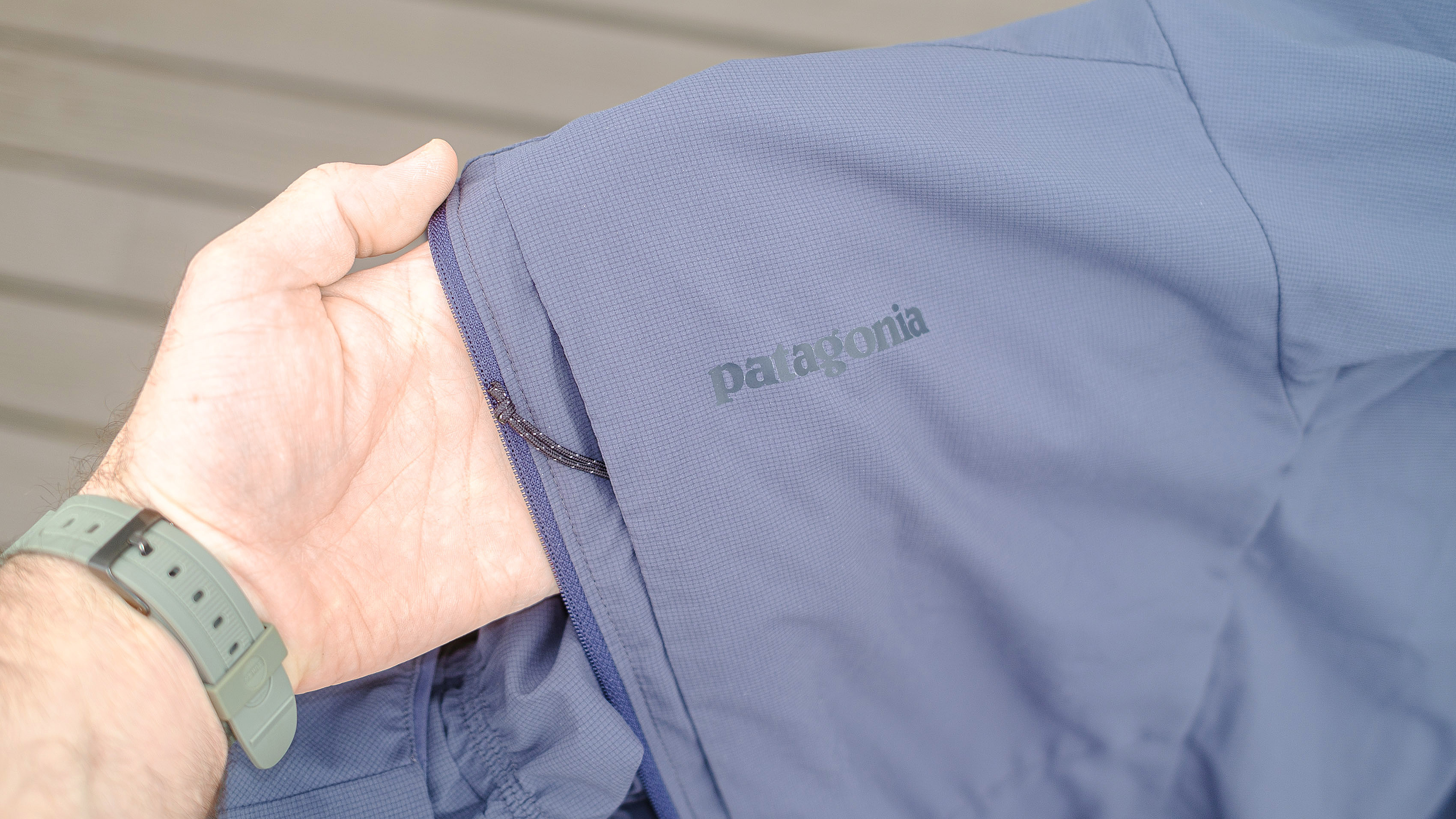
The Patagonia Nano-Air Ultralight keeps growing on me. I'm two months into wearing it on a nearly-daily basis, and from a wear-and-tear perspective, it's holding up remarkably well. Now, I haven't gone ahead and scraped it against any jagged rocks, but I have worn it while hauling a 30-pound backpack full of camera gear across a continent and back. It's also survived the playful yet sharp nails of my pup, Belvedere.
However, as noted in the intro, $249 is a lot of money to spend on a lightweight jacket, even one as versatile as this. That said, I'm not aware of any budget-minded alternative to the Nano-Air Ultralight that's as stretchy, light or breathable (though I do want to give the aforementioned $99 Columbia Acender II a try).
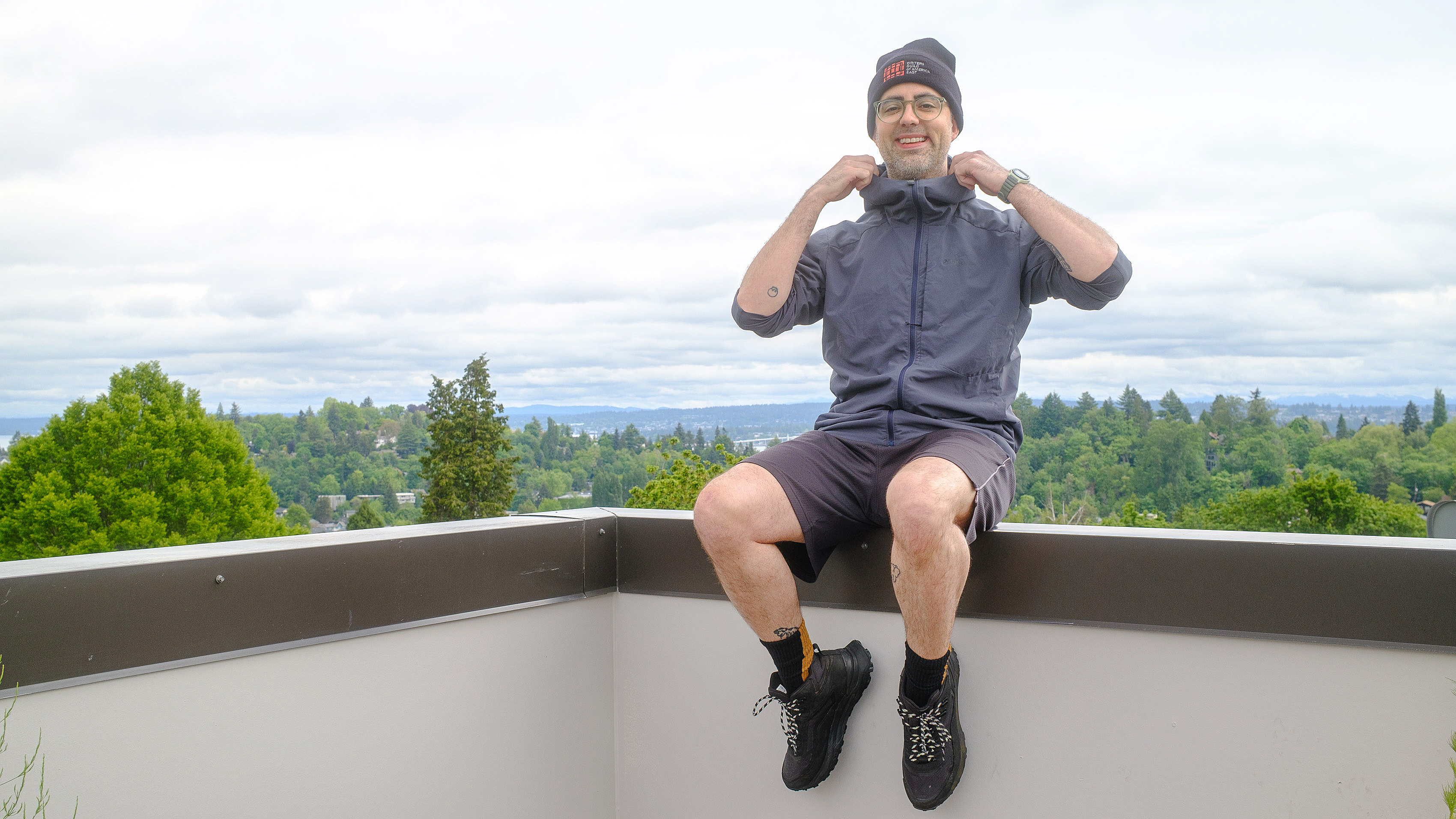
Ultimately, this oh-so-comfy, surprisingly sharp-looking, high-tech, sweat-wicking, flexible, insulated full-zip hooded jacket is something I hope to have in my wardrobe for years to come. And given Patagonia's commitment to repairing and replacing gear, expecting a decade or more out of this garment isn't out of the question.
When you consider the Nano-Air Ultralight from that perspective, $250 is actually a darn good bargain.
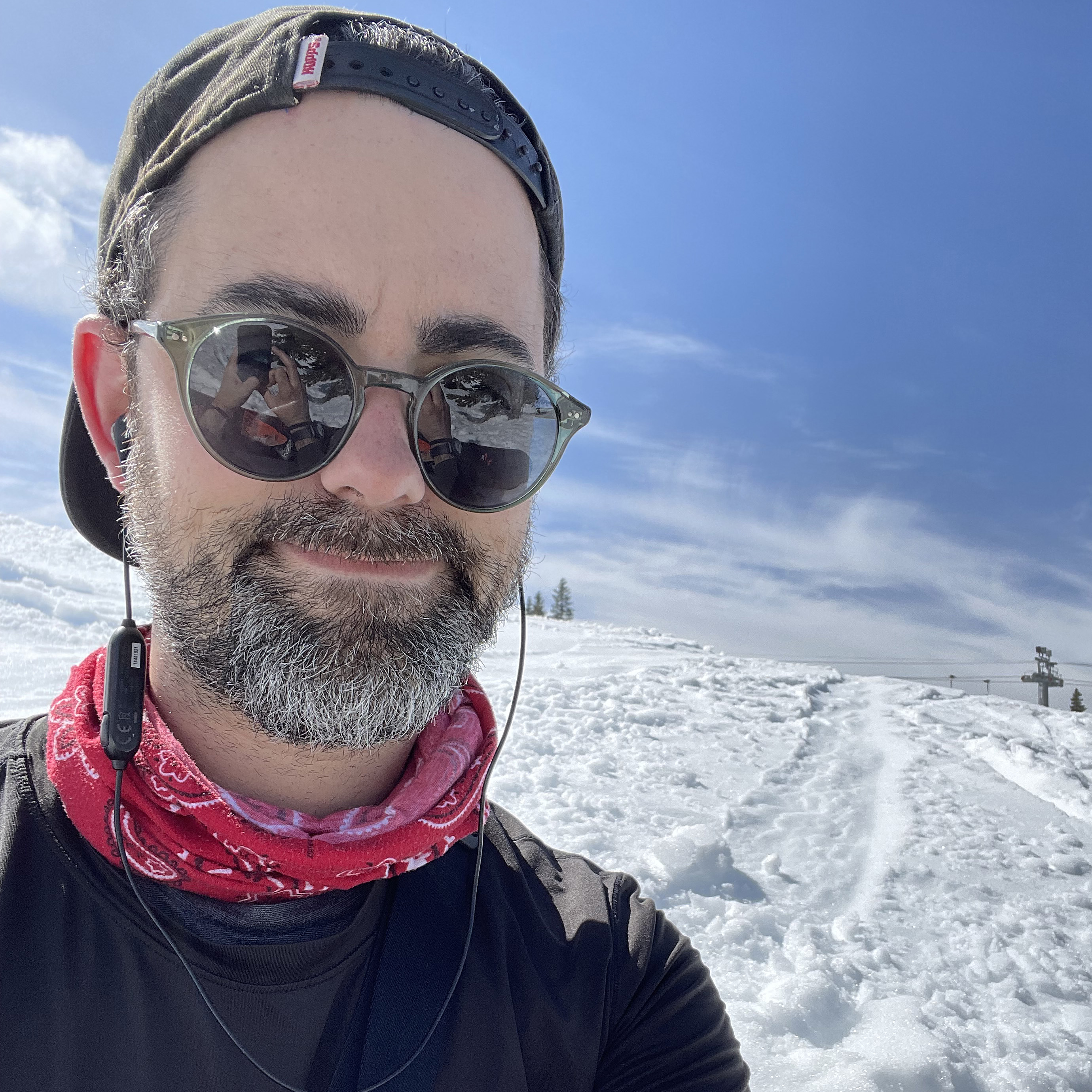
Dan Bracaglia is the Tom’s Guide editorial lead for all things smartwatches, fitness trackers and outdoor gear. With 15 years of experience as a consumer technology journalist testing everything from Oura Rings to instant cameras, Dan is deeply passionate about helping readers save money and make informed purchasing decisions. In the past year alone, Dan has assessed major product releases from the likes of Apple, Garmin, Google, Samsung, Polar and many others.
An avid outdoor adventurer, Dan is based in the U.S. Pacific Northwest where he takes advantage of the beautiful surroundings every chance he gets. A lover of kayaking, hiking, swimming, biking, snowboarding and exploring, he also makes every effort to combine his day job with his passions. When not assessing the sleep tracking and heart rate accuracy of the latest tach gadgets, you can find him photographing Seattle’s vibrant underground music community.
You must confirm your public display name before commenting
Please logout and then login again, you will then be prompted to enter your display name.
